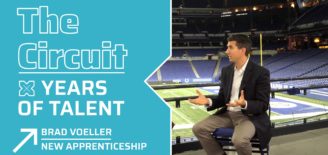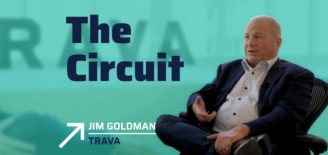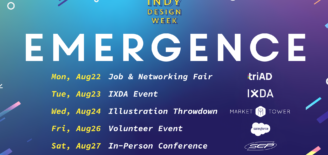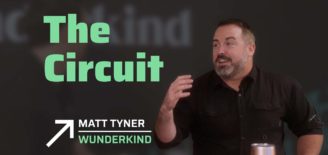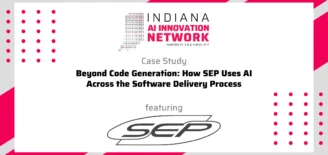Don’t let your team retrospectives become stale
Y’know those necessary evils that employees typically have to endure in an office environment? Annual reviews, timesheet updates, planning meetings, weekly reports etc. Depending on the scenario (and who’s in charge of it), it can be an utter pain — a distraction from the “actual work” they should be doing.
I’ll be honest, some of these things are very much work to me. Weekly reports are completely essential for making sure that our team is hitting all of its goals. As much as I’d love to put it off so I could answer this treasure trove of emails, it has to get done first thing Monday morning. Hence the phrase “necessary evil.” Everyone has them at work and it’s completely normal to feel even the slightest bit agitated.
Thankfully, there are quite a few things we do here at PERQ that don’t make me feel that way at all. Every two weeks, our team holds something called “Retrospective.” If you aren’t aware, Retrospective is the process in which teams come together after a 1 or 2 week Sprint to showcase the work they completed during that period of time. In addition to showing off our work (what we aptly call “Show & Tell”), we reflect on the things that went well and lessons learned. We even take away action items from our Retrospectives.
Although these meetings are a requirement for our team, they’re something I sincerely look forward to — especially now that we’ve since modified the format to make it the most enjoyable and effective meeting possible.
A few months ago, Muhammad Yasin, VP of marketing at PERQ, and I sat down and came to the conclusion that we needed to make adjustments to our Retrospectives. For 2 full years, we followed this format:
- Go over Sprint Report (How many points did we complete?)
- Show & Tell
- What did we do well?
- What didn’t go so well?
- Sprint Planning (Calculating capacity based on how many points you’re assigned against points available.)
- On with your day!
Theoretically, this format is completely valid. There’s nothing wrong with it and it gets the job done. The problem though, was that the process overall was starting to get old. Our Sprint Planning/Retrospective sessions typically last around 2 hours — and even though no one has directly complained — my gut was telling me that it was quickly becoming a big chore for everyone. Why did I feel this way? Because I was getting bored! Also, email/slack use was up (yes, with me too), so no one was engaged.
If you and your team ever find yourselves in a similar boat, I highly encourage you to change things up a bit. Even changing the format just a smidge can make a world of difference.
Since implementing changes to our process, folks in our meetings are visibly more engaged, with an increased number of takeaways and action items. Here are some of the things you can choose to throw into your Retrospectives to ensure your team is receiving value:
1. Enforce “Rules”
I know this might seem super silly, but believe me when I say this works. One of the first changes we implemented at the beginning of Retrospectives were “House Rules,” as follows:
- No Phones. (Phones go in the basket. We will take a few more breaks to avoid crazy anxiety.)
- No checking email (This is important, folks can wait while we catch our breath.)
- No side discussions (We don’t get a lot of group time, let’s make good use of it.)
- Help enforce the rules (We all need a friendly nudge sometimes.)

The reason we decided to implement these rules is because everyone was progressively becoming disengaged. And who could blame them? While we all care about one another and their work, we all have SO MUCH on our plates.
Our side discussions weren’t talking about the latest episode of “Walking Dead,” but rather “What does this salesperson or client need from me?” Lower engagement (during retrospectives) ultimately meant fewer purposeful takeaways with no lessons learned, which is ultimately what Retrospective is all about. By implementing rules, you’re allowing teams to focus on the topic at hand.
2. Turn “Hindsight” into a Discussion
This wasn’t so much a conscious change as much as it was a natural evolution. But who’s to say it couldn’t be a something that you actively try to insert into the Hindsight portion of your Retrospective … or any portion, for that matter.
As I mentioned before, the Hindsight portion of our Retrospective is where we share what “went well” and lessons learned. We’ve done this Hindsight portion since the beginning, but it evolved into a full conversation format.
Instead of going around the room and JUST asking team members what they learned, we would commend one another for their contributions and help one another out. For example: if a team member is experiencing stress from the need to churn out tons of content, another team member might chime in to offer their insight. By allowing conversations to happen naturally like that (or encouraging conversation), you increase the chances for positive change to occur.
3. Add a Professional Development Portion
The biggest change we implemented into our Retrospectives was a Professional Development portion that occurred right before Sprint Planning occurred — basically around the last 30 minutes of our meeting. The reason for this was so that everyone on our team was learning something new and valuable; and that they were taking away something they could implement to their work.
At first we had everyone share thought-provoking educational videos. After watching a quick, 5 to 7 minutes TEDTalk Format-like video, we’d discuss our takeaways. This proved to be quite useful in the first few months of trying it out until we discovered that it’s difficult to formulate an organized conversation around a video you just watched.
Additionally, some videos were more educational than others and sometimes topics were being repeated. It was at that point we decided on a “Book Club;” starting with Seth Godin’s “Linchpin: Are You Indispensible?”
As it stands now, our group reads 1-2 chapters (however many is assigned) and we have a structured conversation around the chapters and how it applies to the company and our roles. Even though we’ve only begun to scratch the surface of the book, the discussions had have already inspired some teammates to take action on different tasks and projects. I am one of those people.
Structured discussion on a relevant piece of reading material can help your team reflect on their wins/lessons learned while allowing them to learn something new — a technical skill, a soft skill or even a leadership skill.
While it’s true that every team’s process for Sprint Planning and Retrospective are different, it’s important to remember that different methods (no matter what they are) can become stale. If your method of Retrospective is supposed to make your team’s processes more innovative and effective, why would you let the METHOD of improving those processes become stale?
If you want to build a stronger, more engaged and more effective team, everything that goes into doing that needs to be just as effective and impactful. If you feel like your Retrospectives could use a little more UMPH, It’s probably because they need is. Don’t hesitate to implement new things to your Retrospective. Make the most of every minute you have to devote to it!
 About the Author
About the Author
Felicia Savage is a content marketing specialist and online community builder at PERQ, an engagement technology company that focuses on helping brands generate excitement, educate their consumers, and provide shopping assistance to their consumers using interactive experiences.


















